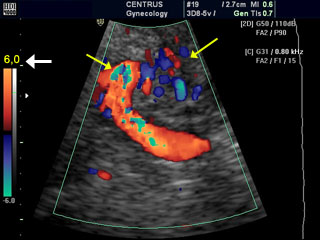Most people instantly picture a surgical mishap when you mention medical malpractice. However, one of the most frequent causes of medical malpractice claims is diagnostic mistakes.
An incorrect diagnosis can cause treatment delays, which can significantly negatively affect the patient’s health and, in rare cases, lead to an incurable condition. The best course of action if you think a misdiagnosis caused you to harm to get legal counsel from MTM Legal.
Table of Contents
How To Respond If You Were Misdiagnosed?
A patient can file a medical malpractice claim with a lawyer to obtain compensation for damages if a misdiagnosis causes harm or injury to them. For certain people, misdiagnosing an ailment, disease, or accident can result in major health issues and even death. In addition, the patient’s relatives may bring a wrongful death claim on their behalf if the patient passes away due to a misdiagnosis.
What Counts As An Incorrect Diagnosis?
Statistics show that one in twenty individuals who seek medical care for a sickness, condition, or accident have their diagnosis wrong. This translates to around 12 million patients annually. Still, doctors believe the true numbers may be significantly higher because many patients must be aware of their misdiagnosis and not disclose it.
The third most common cause of mortality, according to the Johns Hopkins School of Medicine, is due to medical mistakes. A medical misdiagnosis is frequently attributed to mistakes made by hospitals, doctors, nurses, and other healthcare providers, but subpar medical tools can also cause it. A medical condition’s wrong diagnosis is the simplest definition of a misdiagnosis.
Misdiagnosis Factors
Some diseases are just difficult to identify; therefore, a misdiagnosis does not always indicate that your doctor acted dishonorably. You must instead show that the doctor was careless in some way. It might be challenging to figure out what went wrong since doctors need substantial knowledge and training. The following list includes some of the most frequent reasons for incorrect diagnoses:
- Failure To Do A Complete Assessment: although it may seem obvious, doctors must carefully evaluate their patients to diagnose correctly. This includes posing queries, hearing you explain your problem, and assessing your symptoms. Doctors who speed through the examination or take shortcuts risk missing important details.
- Failure To Study Your Medical Records: Before diagnosing a patient, clinicians should thoroughly evaluate the patient’s medical history. Similar to giving a subpar examination, doctors who neglect to check your records properly may overlook critical information.
- Misinterpretation Of Test Findings: Interpreting test results correctly frequently necessitates considerable research. When your doctor needs to evaluate your test data properly, a misdiagnosis may ensue.
- Testing Errors: Inadequate testing procedures might produce inaccurate results. This can result from damaged testing equipment, improper treatment of the materials, or underqualified lab technicians. The lab, not your doctor, should be held accountable.
Healthcare personnel is not treating patients per the accepted standard of care in any of these cases. You could be entitled to compensation for any harm done to your health as a result. A skilled personal injury lawyer in Parramatta will be able to support your claims.
Following A Misdiagnosis: What To Do?
Although 10% of patient deaths are due to medical mistakes, many incidents go unreported. As a result, the majority of patients are unaware of their misdiagnosis or are unaware of what to do in this situation. Hospitals, doctors, medical examiners, coroners, and funeral homes seldom identify medical mistakes on patient death certificates, according to the Centers for Disease Control and Prevention (CDC).
A physical examination and several testing techniques, including diagnostic tests, screening tests, imaging tests, and laboratory tests often used to identify patient ailments and diseases, are typically required for an appropriate diagnosis.
- Diagnostic Tests: Diagnostic tests are frequently carried out to confirm or rule out certain medical disorders, such as heart disease, strokes, lung and respiratory issues, strokes, and some forms of cancer.
- Screening Tests: Screening tests are performed to check for issues in people who are at a high risk of getting particular issues. Mammograms, ultrasounds, and fertility tests for women, as well as prostate scans for men, are examples of common screening exams.
- Image Tests: Images of internal organs and body components are produced during imaging testing. They consist of ultrasound, CT, MRI, and X-ray techniques. They are frequently used to identify fractures and fractured bones, head traumas, brain damage, and pregnancy.
- Laboratory Tests: Laboratory exams are often performed at a hospital or other medical facility. They are frequently used to get patients’ blood, urine, or tissue samples and find issues with their kidneys, liver, pancreas, thyroid, blood pressure, cholesterol, and insulin levels.
How To Establish Medical Malpractice?
Medical malpractice must be backed up in court when a claim is made. Medical malpractice sometimes involves multiple defendants when patients see various doctors or specialists.
When several healthcare providers provide patient care, the patient is treated by various medical professionals, and there are many causes of damage, it may be challenging to show a duty breach or negligence in some circumstances. To deal with the complex concerns of carelessness, a skilled medical malpractice attorney is necessary.
Professional negligence is a particular area of tort law known as medical malpractice. Tort (meaning wrong) and tort laws provide civil cases redress. The most often applied criteria in tort law are called “negligence,” defined as behavior subpar by particular professions’ standards of conduct.
Conclusion
Certainly, the best defense is to develop a malpractice insurance coverage that is satisfactory and that can cover you against various scenarios. It is always ideal to obtain your target liability limits.
Develop a professional malpractice policy that provides an assessment by insurance professionals who are experienced in analyzing these kinds of risks. You can find the best malpractice protection MTM Legal to fit your specific providers of care and practice features. So, consult them and curate the right framework to avoid such complexities.











